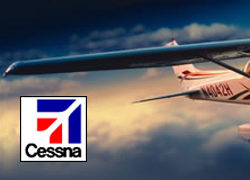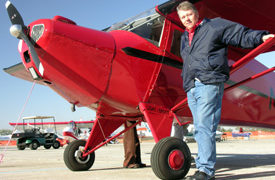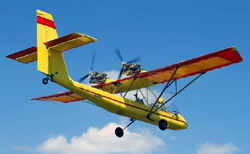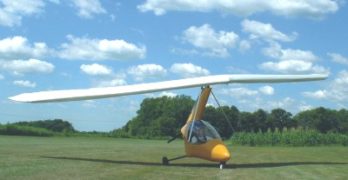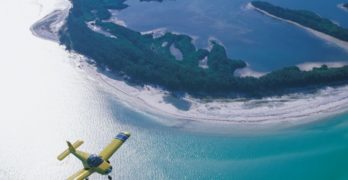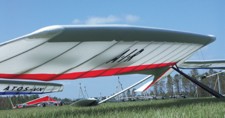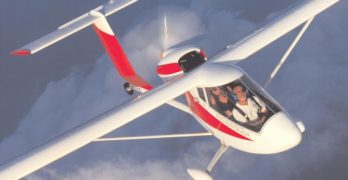Earlier this year at Sebring Cessna officials including boss Jack Pelton made a stealth visit to the LSA Expo (see SPLOG of January 14, 2006). Well, a bizjet hiding among Light-Sport Aircraft wasn’t particularly stealthy but they were apparently serious. Today the rumor mill kicked into overdrive with the big company’s formal announcement that it is “studying the feasibility of developing and producing a Light Sport Aircraft (LSA).” Cessna said they’ll have have a mockup in the LSA Mall at EAA AirVenture Oshkosh 2006 and noted that LSA represents “the highest growth sector of general aviation.” This announcement is both exciting and more than a little scary for current LSA providers. Cessna jumped into the Very Light Jet (VLJ) market with their Mustang, and they are supposedly creating a “Cirrus Killer.” The storied brand is glancing over its shoulder in several aviation markets. Big companies are often less nimble than small players.
Search Results for : Sebring Expo
Not finding exactly what you expected? Try our advanced search option.
Select a manufacturer to go straight to all our content about that manufacturer.
Select an aircraft model to go straight to all our content about that model.
An LSA Standards Progress Report
An LSA Standards Progress Report
Before the U.S. Sport Aviation Expo launched its inaugural event on October 28, 2004, members of the ASTM F37 committee writing the industry consensus standards for Light-Sport Aircraft held their fall meeting at a hotel owned by the Sebring International Raceway.
Approximately 60 industry representatives and FAA officials met over a two-and-a-half day schedule to finish work on standards for design and performance, quality assurance, production and continuing airworthiness. Under the catchall title of the Cross Cutting Committee, attendees also worked on standards for engines, props, emergency parachutes, airparks and noise.
Specifications are finished for airplanes, powered parachutes, weight-shift (trikes), lighter than air and several of the cross cutting groups. Standards are well underway for gyroplanes and gliders. All ASTM standards are living documents that must be reviewed every two years and can be changed as needed to improve their functionality. They stand in lieu of FAA certification standards, though numerous FAA personnel have been an integral to their development.
Can An Oldie Be a Goodie…as a LSA?
I find it ironic that our first new SLSA certification of 2006 is one of the oldest. Welcome to the Taylorcraft Sport as Number 24 in our parade of newly FAA-approved Special Light-Sport Aircraft. A bright red Taylorcraft Sport showed at the Sebring U.S. Sport Aviation Expo last week after winning its approval on January 9th. The taildragger Sport comes with a Continental O-200 100 horsepower engine and without flaps for $69,995, a fairly modest price in this time of Light-Sport Aircraft hitting six figures. Taylorcraft has a rich historical background, starting in 1935 and including a run of thousands of aircraft built. In mid-1946 the company was producing 30 new aircraft a day!…so many that, even today, the majority of Taylorcrafts flying are from that year. Now, buyers can obtain a brand new Sport from the revived company.
Leza AirCam Gets New Owners with Ambitious Plans
As mentioned in the SPLOG from Friday Oct. 21st, I have some big news in the world of recreational flying…literally big in the sense of involving the biggest “ultralight” of them all, the AirCam twin. This delightful flying machine, first created by Phil Lockwood and crew, has been languishing under the leadership of investor Antonio Leza who became full owner of the design a few years ago. That’s all about to change when Antonio and Shawn Okun, the ambitious head of Sebring-based Floatplanes & Amphibs, make a detailed announcement at the LAMA/LSA Marketing Group “hospitality tent” during AOPA’s Expo in Tampa November 3-4-5. They will announce that a group assembled by Okun has signed an agreement to take over ownership of Leza AirCam and its building and land lease on the Sebring, Florida airport. Come hear the details at the Peter O.
Seagull Aerosports takes a new angle
Seagull Aerosports takes a new angle on weight-shift construction with a fully enclosed cockpit.
Developer Michael Riggs might prefer I called his Escape Pod something other than Everyman’s Motorglider, but if you have any interest in self-launched soaring flight, Riggs’ invention is one of the most cost-efficient purchases you can make. The Escape Pod costs thousands less than ultralight motorgliders and literally hundreds of thousands less than sailplane motorgliders.
Oh, and one more thing this kind of flying machine is a hoot to fly. That the Escape Pod also transports easily, can be stored in a small space and is attractively shaped are icing on the cake.
Sure, it’s obvious-I like the Escape Pod. But could it be for you, too? Even if this aircraft isn’t your type, you might enjoy reading about how thoughtfully it was designed.
Trike Motorgliders
Before the Sport Pilot/Light-Sport Aircraft (LSA) rule was recently passed, trike enthusiasts had several other ways to fly such aircraft.
IndUS – Thorpedo
All Revved and Everywhere to Go
This vintage design with a big Jabiru engine is an impressive performer.
Since its reintroduction to the aviation community by IndUS Aviation, John Thorp’s T-211 is generating more attention than at any time since he first designed the airplane.
While John worked on large aircraft, like the Navy patrol bomber P2V Neptune, he focused most of his career on small, sporty aircraft. He began designing a two-place light aircraft in the 1930s. By the 1950s his T-10 Sky Skooter powered by a 50-hp Franklin 2AC-99 engine evolved into the T-111 with a 75-hp Lycoming engine. Later it became the T-211, with a Continental O-200. It is this last version of the T-211 that IndUS now offers as a standard category aircraft. IndUS is also planning to offer the model as a light-sport aircraft (LSA) with a Jabiru 3300 engine, affectionately named the Thorpedo for its improved performance.
Product Lines – November 2004
ST. PAUL, MINN. — Just as the October “Product Lines” was headed to press a last-minute
update was inserted into the column by USHGA’s alert art director, Tim Meehan. At
the end of last month’s column I was writing about Alan Chuculate’s paraglider
aerotow trike, the SlowTow. A week after the deadline, Alan wrote, “The SlowTow
project suffered a major setback on Wednesday when Floyd Fronius crashed
in the trike and crushed a vertebrae and his heel. It was a classic case of a low
altitude aerotow problem resulting in the towplane pilot getting pitched down and
not releasing early enough. Both trike and glider were airborne at approximately
150 feet AGL.” Alan reports that Floyd thought the glider had released because the
towline was slack. He began to descend and turned left to reconnect and try again.
“But as he turned left the towline tightened rapidly, the glider climbed dramatically,
and the trike was slowed and pitched nose down.” Perhaps Floyd should have released
at the first sign of the problem, but it takes a short time to comprehend the situation
and he didn’t have those precious seconds.
A-I-R’s ATOS VX
By any measure AIR’s ATOS VX is a stunning work of art. The 46-foot span hang glider or nanolight-trike wing is a truly beautiful construction that shows the artistic and engineering prowess of designer Felix Ruhle and his A-I-R company of Germany. I flew this “rigid wing” glider in Florida before the Sebring U.S. Sport Aviation Expo last October. My first flight was a tandem with Felix and then I soloed this big wing built for two-place “tandem” operations. Look for an article in the 4/05 issue of Kitplanes magazine.
The Vista A-20 Cruiser & Varlet
Eastern European designers deliver nimble machines
UPDATE–November 2008: According to FPNA, an American company with a business relationship to A-20 producer Aeroprakt, the A-20 has been discontinued. Please contact FPNA for more information (contact info at end of article).
As the new millennium got underway,
visitors to EAA
AirVenture Oshkosh 2000 examined
a new aircraft from a
Ukrainian company called Aeroprakt
Ltd. Named the A-22 Valor, the unique
side-by-side two-seat aircraft had a distinctive
cabin largely covered in clear
plastic. It was displayed by John Hunter
and his company, Spectrum Aircraft.
The Valor has turned out to be only
the first in a fleet of light aircraft that
have materialized before American eyes.
In 2001, another Aeroprakt model appeared
on Spectrum’s display space-the
A-20 Vista Cruiser, one of a series of A-20
models.
John Hunter became well
known in the light plane
world while working
for Phil Lockwood,
designer of the much-admired Air Cam.
- « Previous Page
- 1
- …
- 24
- 25
- 26


